Introduction
Rawalpindi, a bustling city in Pakistan, boasts a vibrant culinary tapestry that embodies the essence of Pakistani cuisine. When it comes to savoring the rich flavors and aromas of Pakistan, delving into the food in Rawalpindi is an absolute must for visitors. Renowned for its diverse gastronomic offerings, Rawalpindi’s food scene stands as a testament to the region’s cultural heritage and culinary prowess within Pakistan. From aromatic biryanis to sizzling kebabs, the city’s food landscape presents an exquisite blend of flavors, colors, and textures that captivate the taste buds and offer a culinary journey unlike any other. Exploring the food in Rawalpindi unveils not just a feast for the senses but also a deeper understanding of the cultural significance and diversity embedded in every dish, making it an integral part of the Pakistani experience. Whether indulging in street-side delights or relishing traditional recipes passed down through generations, Rawalpindi’s cuisine promises an unforgettable exploration into the heart of Pakistani culinary heritage.
List of Top Food in Rawalpindi
| S. No | Name of Food/Dish | Category | Price Range (USD & EUR) | Main Ingredients (if available) |
|---|---|---|---|---|
| 1 | Seekh Kebab | Meat Dish | $5-$15 USD, €4-€12 EUR | Minced meat, spices, herbs |
| 2 | Chapli Kebab | Meat Dish | $6-$18 USD, €5-€15 EUR | Ground meat, spices, tomatoes |
| 3 | Nihari | Meat Dish | $7-$20 USD, €6-€17 EUR | Slow-cooked meat, spices, broth |
| 4 | Haleem | Savory | $6-$15 USD, €5-€12 EUR | Wheat, barley, meat, lentils |
| 5 | Peshawari Chapli Kebab | Meat Dish | $8-$22 USD, €7-€19 EUR | Ground meat, spices, tomatoes |
| 6 | Chicken Karahi | Meat Dish | $8-$20 USD, €7-€17 EUR | Chicken, spices, tomatoes |
| 7 | Mutton Karahi | Meat Dish | $10-$25 USD, €8-€20 EUR | Mutton, spices, tomatoes |
| 8 | Biryani | Savory | $7-$18 USD, €6-€15 EUR | Rice, meat/vegetables, spices |
| 9 | Pakoras | Deep Fry Dish | $4-$10 USD, €3-€8 EUR | Vegetables, gram flour, spices |
| 10 | Samosas | Savory | $3-$8 USD, €2-€7 EUR | Pastry, spiced filling (meat/veg) |
| 11 | Gol Gappay (Pani Puri) | Savory | $2-$6 USD, €1.5-€5 EUR | Hollow crispy shells, tangy water |
| 12 | Dahi Bhallay | Savory | $4-$10 USD, €3-€8 EUR | Lentil balls, yogurt, spices |
| 13 | Aloo Tikki | Veg Dish | $3-$8 USD, €2-€7 EUR | Potato patties, spices |
| 14 | Chicken Handi | Meat Dish | $9-$25 USD, €7-€21 EUR | Chicken, spices, cream |
| 15 | Naan | Bread | $1-$3 USD, €0.8-€2.5 EUR | Leavened flatbread |
| 16 | Paratha | Bread | $2-$5 USD, €1.5-€4 EUR | Flaky, layered flatbread |
| 17 | Tandoori Chicken | Meat Dish | $6-$16 USD, €5-€13 EUR | Marinated chicken, tandoori spices |
| 18 | Zarda | Sweet | $4-$12 USD, €3-€10 EUR | Sweet rice, nuts, saffron |
| 19 | Kheer | Sweet | $3-$9 USD, €2.5-€8 EUR | Rice pudding, milk, nuts |
| 20 | Jalebi | Sweet | $2-$7 USD, €1.5-€6 EUR | Deep-fried batter, sugar syrup |
| 21 | Rabri | Sweet | $4-$10 USD, €3-€8 EUR | Thickened sweetened milk |
| 22 | Shahi Tukray | Sweet | $5-$15 USD, €4-€12 EUR | Bread pudding, milk, nuts |
| 23 | Chana Chaat | Savory | $4-$10 USD, €3-€8 EUR | Chickpeas, spices, chutneys |
| 24 | Fruit Chaat | Savory | $3-$8 USD, €2.5-€7 EUR | Mixed fruits, spices, sauces |
| 25 | Pani Puri | Savory | $2-$6 USD, €1.5-€5 EUR | Hollow crispy shells, tangy water |
| 26 | Aloo Chaat | Savory | $3-$8 USD, €2.5-€7 EUR | Potatoes, spices, chutneys |
| 27 | Chicken Roll | Savory | $4-$10 USD, €3-€8 EUR | Chicken, flatbread, sauces |
| 28 | Bihari Boti | Meat Dish | $8-$20 USD, €7-€17 EUR | Marinated meat, spices, skewered |
| 29 | Reshmi Kebab | Meat Dish | $7-$18 USD, €6-€15 EUR | Minced meat, spices, cream |
| 30 | Anda Shami Burger | Meat Dish | $5-$12 USD, €4-€10 EUR | Egg, shami kebab, burger bun |
| S. No | Name of Food/Dish | Category | Price Range (USD & EUR) | Main Ingredients (if available) |
Note: The price range provided is approximate and may vary depending on the restaurant or vendor.
Seekh Kebab: Seekh Kebabs are minced meat skewers, usually made with ground meat (often beef or lamb) mixed with various spices like cumin, coriander, and garam masala. These are shaped onto skewers and traditionally cooked in a tandoor (clay oven), giving them a deliciously smoky flavor.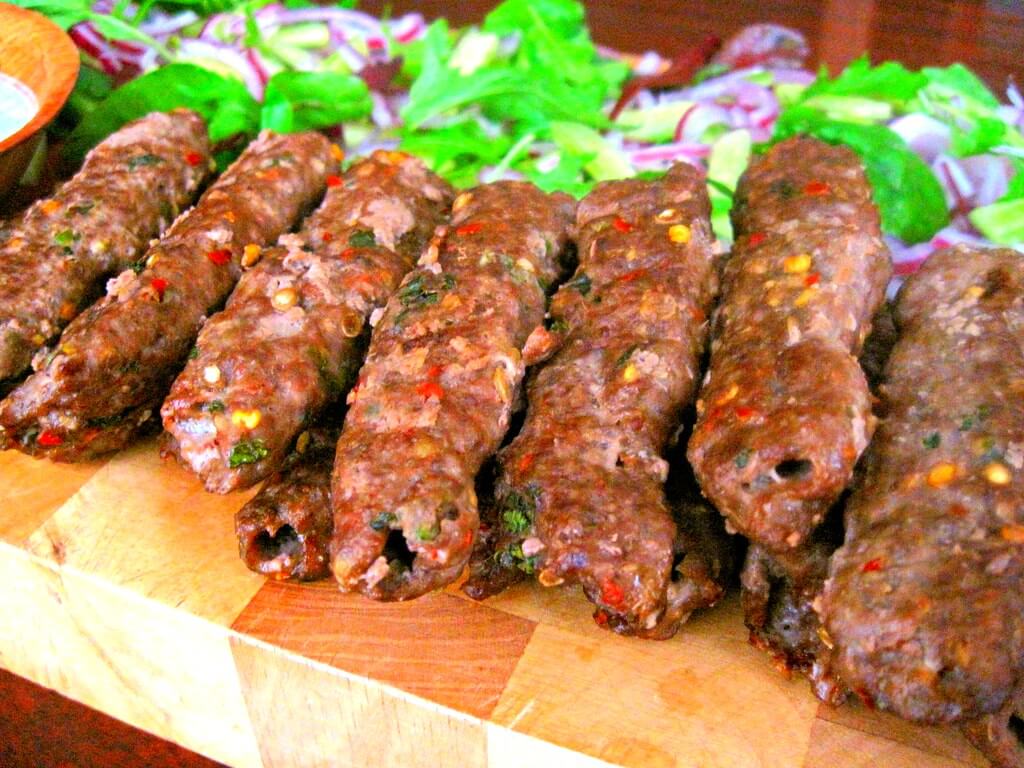
Nihari: Nihari is a slow-cooked stew, typically made with beef or mutton, simmered overnight to achieve a rich, flavorful gravy. It’s seasoned with a blend of spices like cinnamon, cardamom, cloves, and nutmeg, resulting in a hearty and aromatic dish usually served with naan or rice.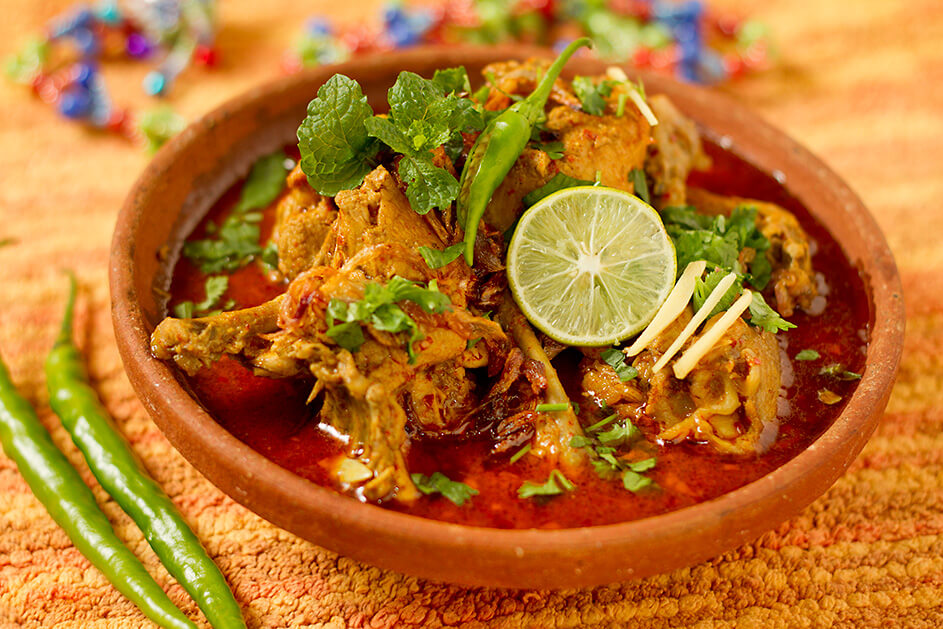
Haleem: Haleem is a thick and hearty stew made from a mix of wheat, barley, and various lentils slow-cooked with meat (usually chicken, beef, or mutton). The dish is cooked for hours until the grains and meat blend into a smooth, porridge-like consistency. It’s seasoned with spices and garnished with fried onions, fresh coriander, and ginger.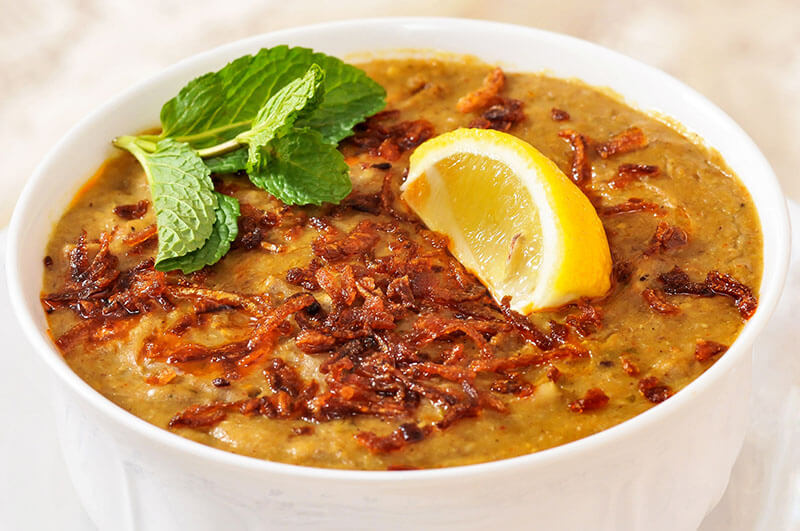
Chapli Kebab: Chapli Kebabs originate from the Khyber Pakhtunkhwa region and are large, round, and flat patties made with minced meat (often beef or lamb) mixed with a variety of spices like coriander, cumin, and chili powder. These kebabs are pan-fried in oil, often incorporating chopped tomatoes, onions, and green chilies for added flavor and texture.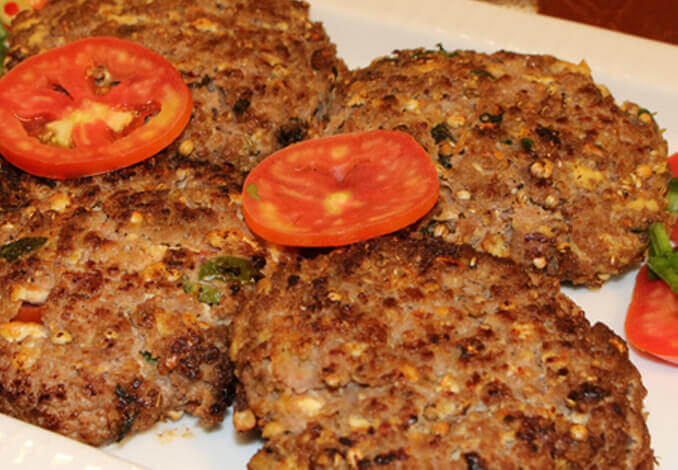
Biryani: Biryani is a fragrant rice dish layered with spiced meat (chicken, mutton, or beef), aromatic spices, fried onions, and fresh herbs. The rice is often cooked separately with spices like cardamom, cinnamon, and bay leaves before being layered with the cooked meat and slow-cooked to infuse all the flavors together.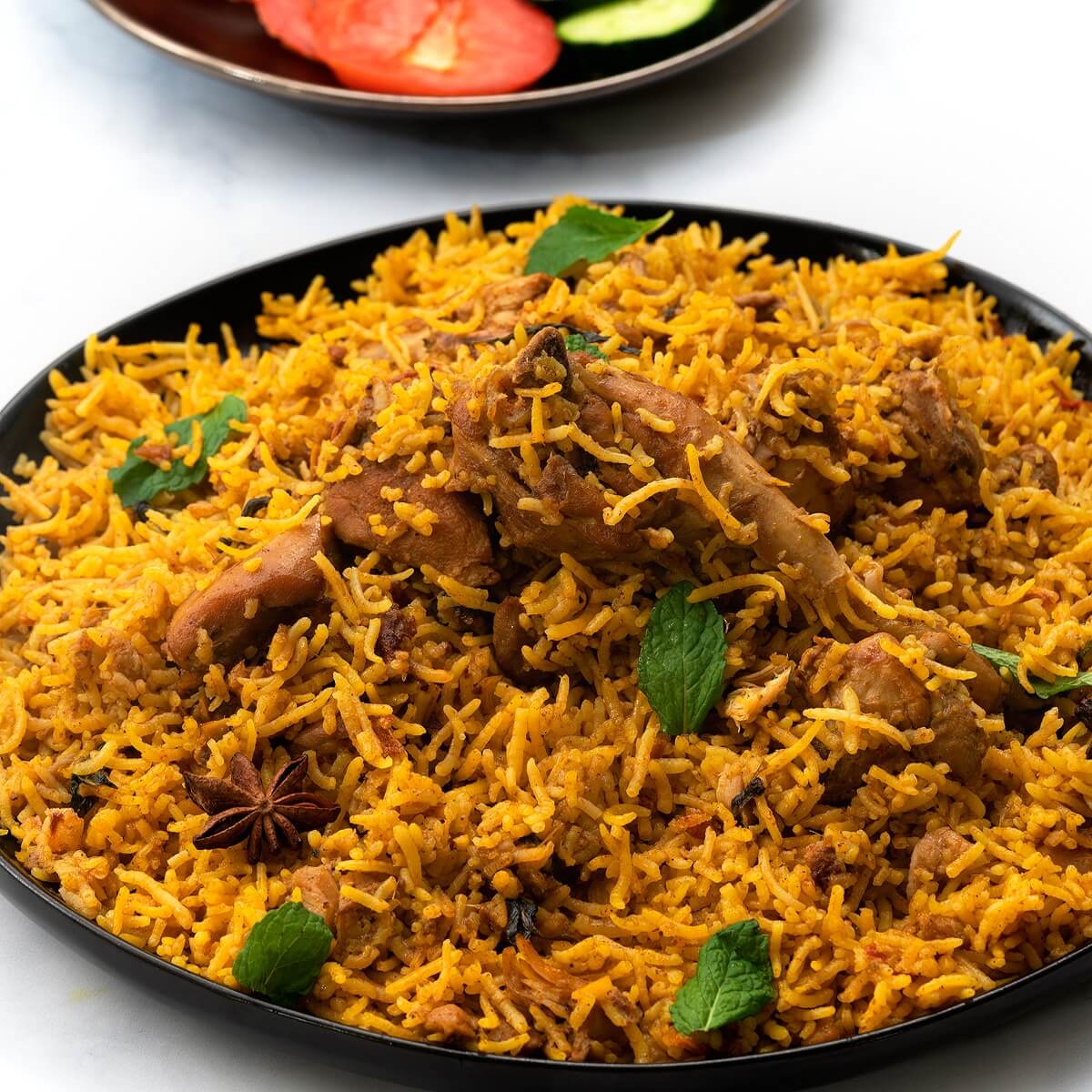
Gol Gappay (Pani Puri): Gol Gappay, also known as Pani Puri, are hollow, crispy shells filled with a mixture of tamarind water, chickpeas, potatoes, onions, and various spices. These bite-sized snacks are bursting with sweet, tangy, and spicy flavors, making them a popular street food in Rawalpindi.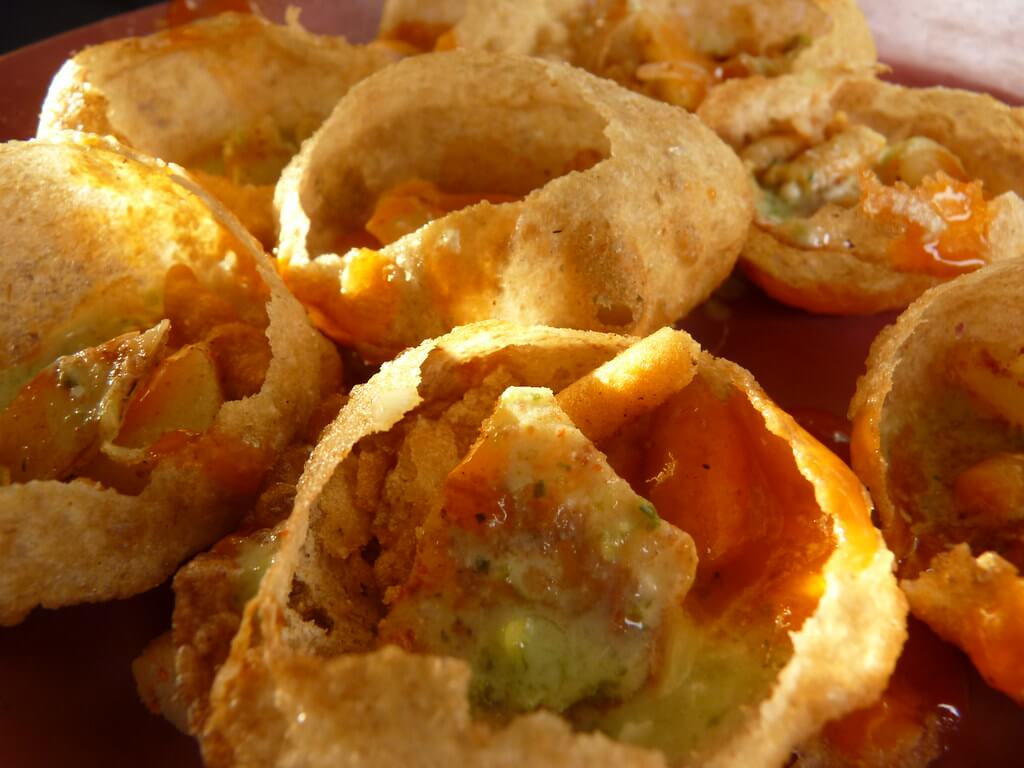
Chicken Karahi: Chicken Karahi is a flavorful dish where chicken is cooked in a karahi (wok-like cooking vessel) with tomatoes, green chilies, ginger, garlic, and a blend of spices like cumin, coriander, and garam masala. It’s cooked until the chicken is tender and the flavors are well-infused.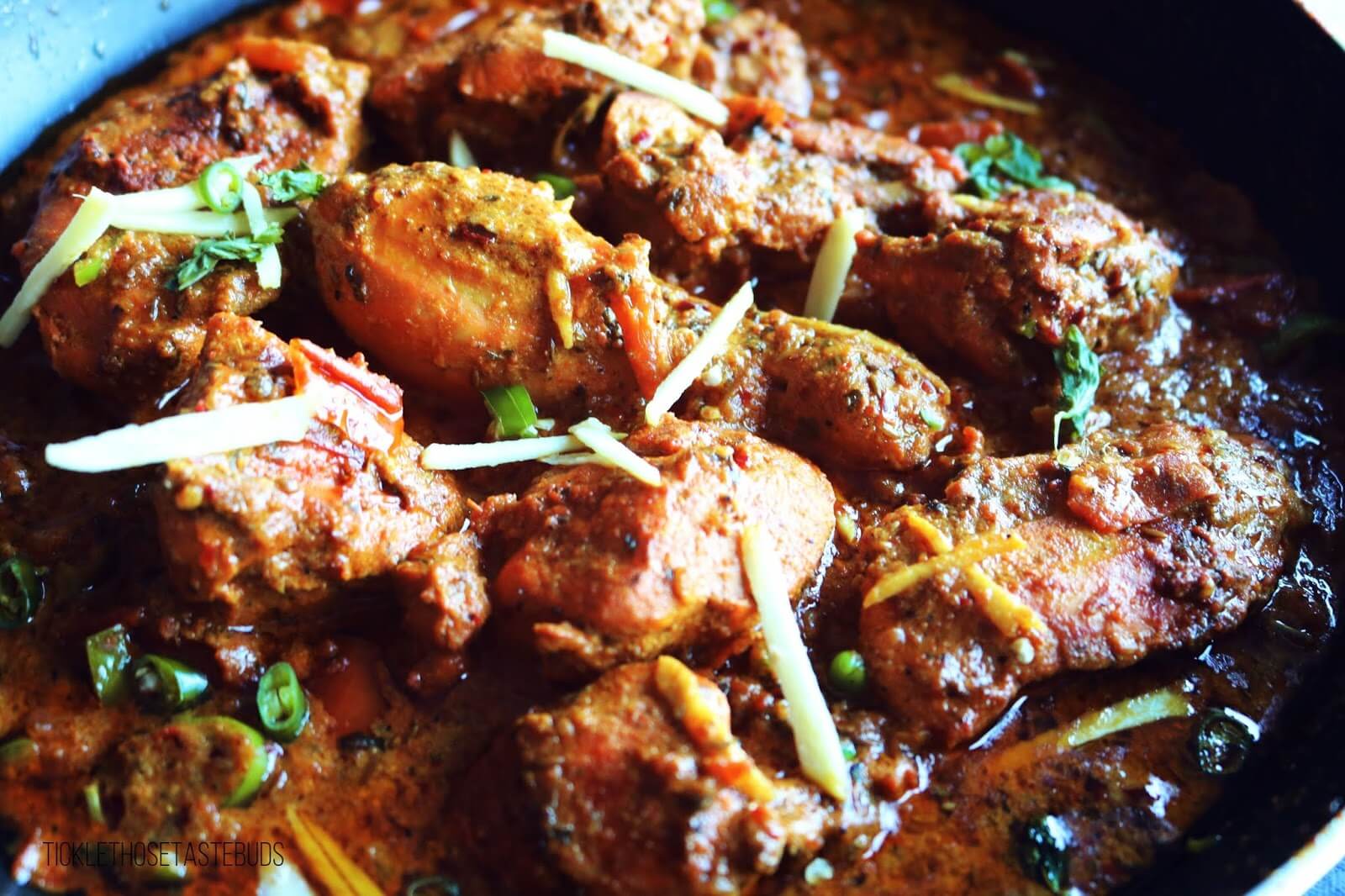
Aloo Tikki: Aloo Tikki is a popular snack made with mashed potatoes mixed with various spices like cumin, coriander, and chili powder. These potato patties are shallow-fried until golden and crispy on the outside and served with chutneys or yogurt.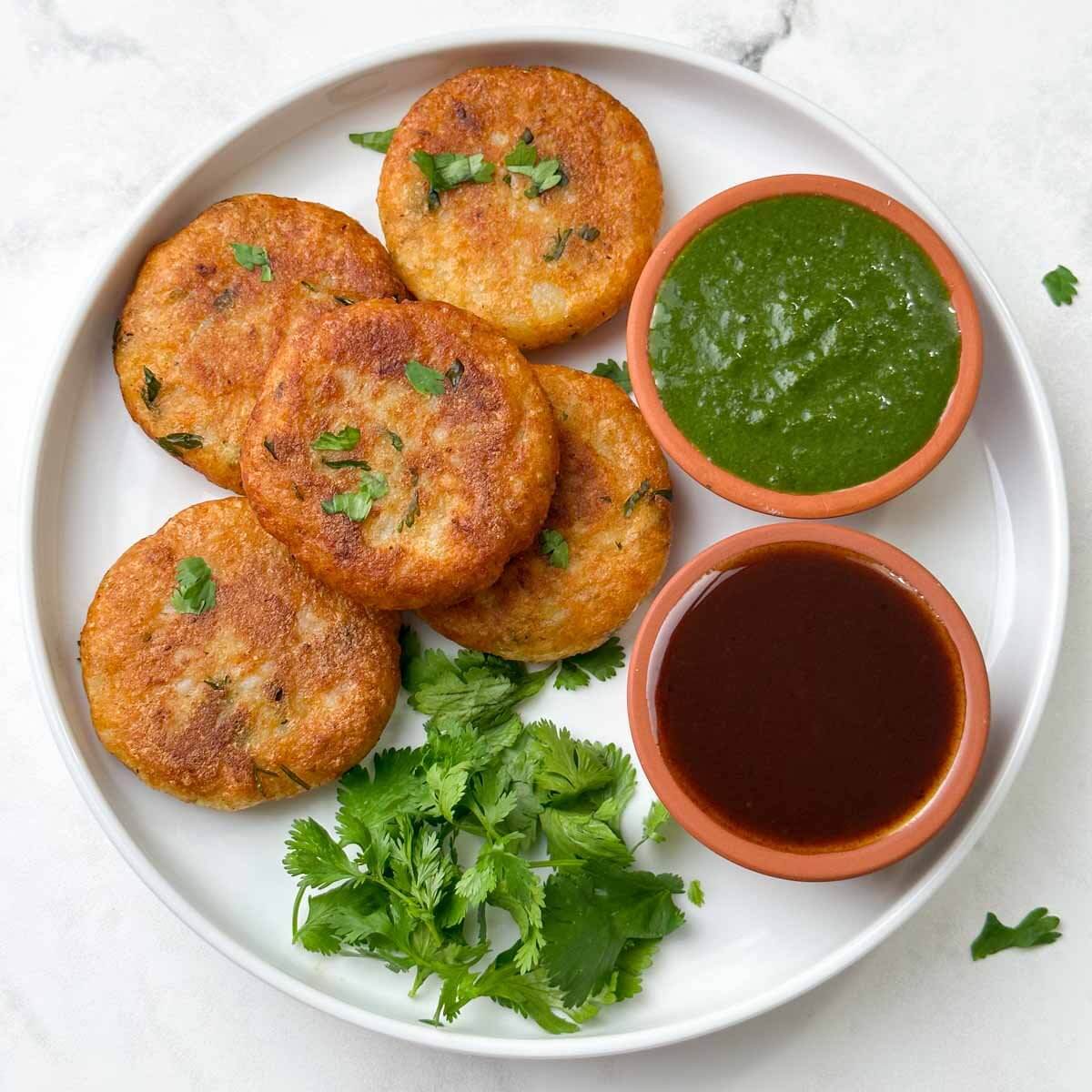
Samosas: Samosas are triangular pastries filled with a mixture of spiced potatoes, peas, and sometimes minced meat. The pastry shell is made with flour, and the filling is seasoned with a blend of spices like garam masala, coriander, and chili powder before being deep-fried until crispy.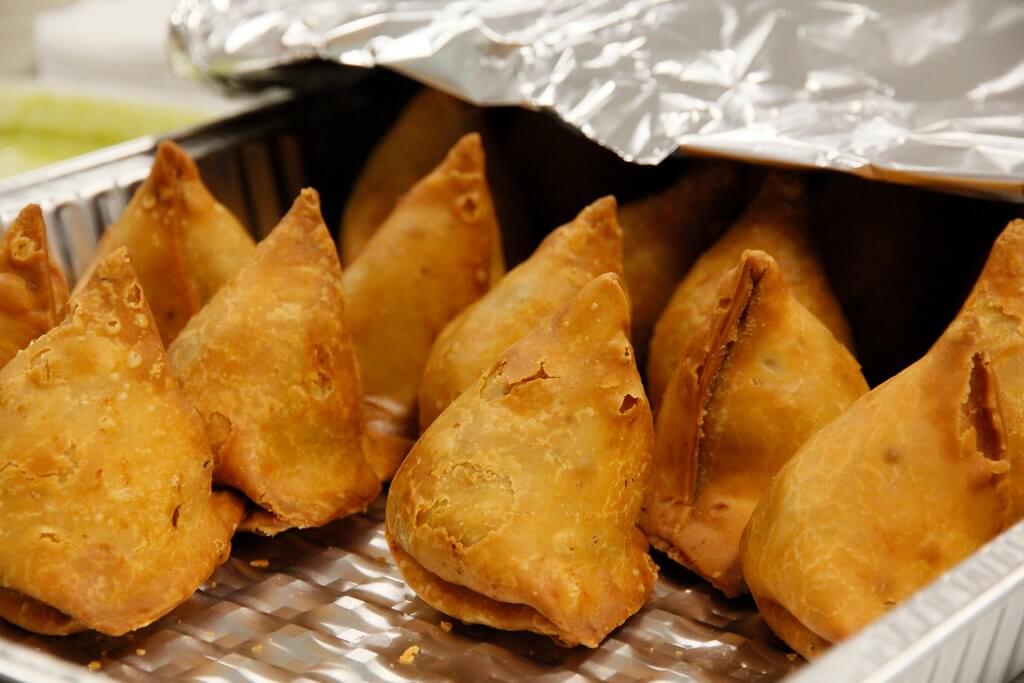
Dahi Bhallay: Dahi Bhallay is lentil-based dumplings soaked in yogurt and topped with tangy tamarind chutney and spices like cumin, red chili powder, and chaat masala. These savory snacks offer a combination of creamy, tangy, and spicy flavors.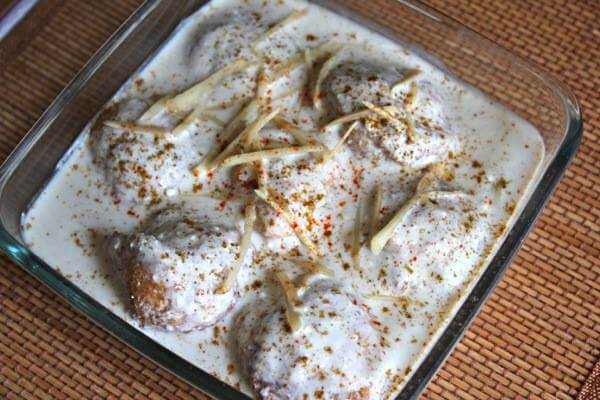
Peshawari Chapli Kebab: Peshawari Chapli Kebabs are similar to regular Chapli Kebabs but have a distinct flavor profile with added ingredients like pomegranate seeds, tomatoes, and green chilies. These kebabs are known for their aromatic spices and crispy exterior.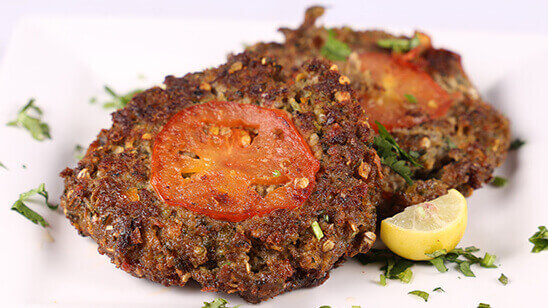
Paratha: Parathas are flaky, layered flatbreads made from whole wheat flour. They’re often pan-fried with ghee or oil and can be plain or stuffed with various fillings like potatoes, vegetables, or minced meat, offering a delightful and filling meal.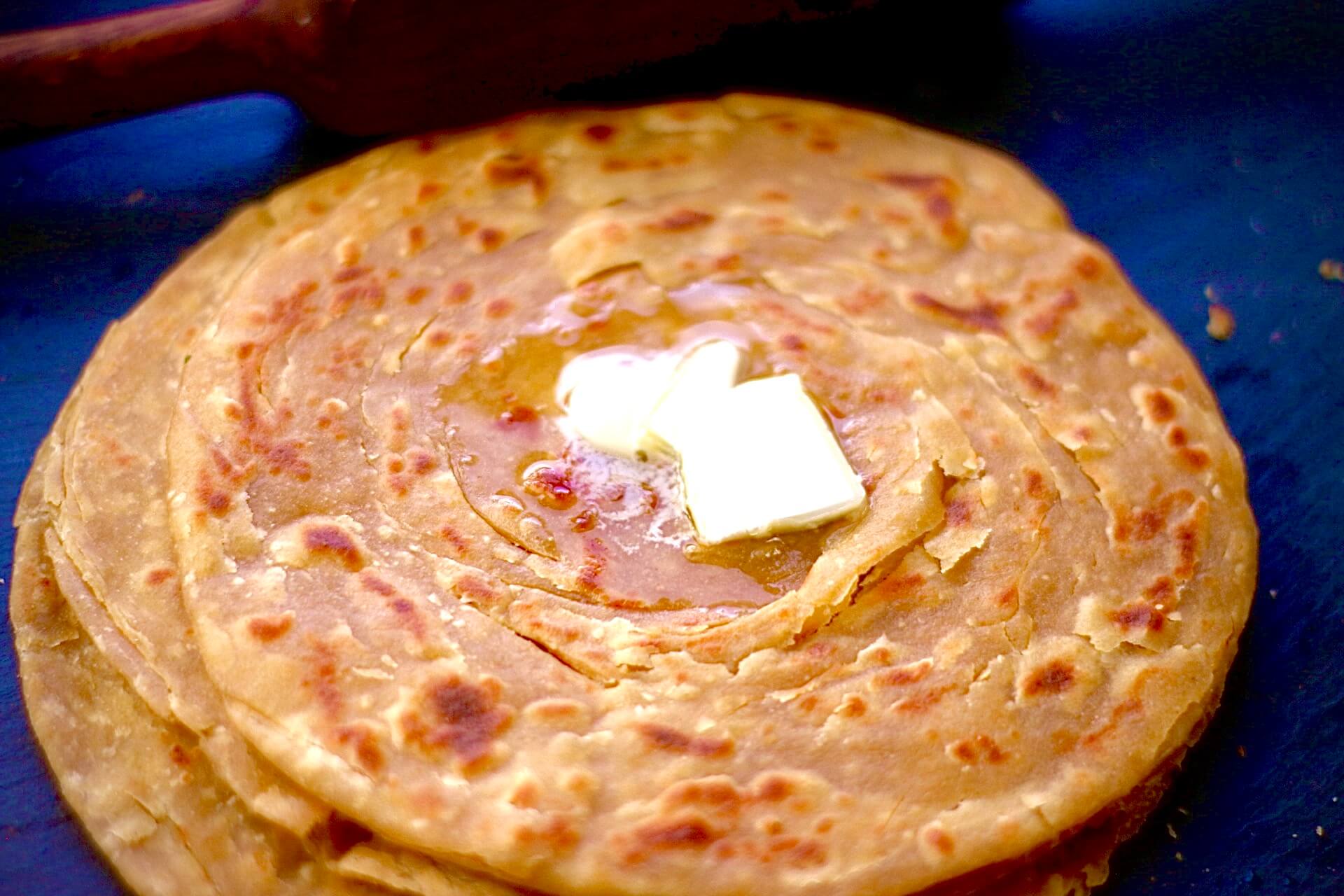
Tandoori Chicken: Tandoori Chicken is marinated in a blend of yogurt and spices like red chili powder, turmeric, and garam masala, giving it a vibrant red color and bold flavors. It’s traditionally cooked in a tandoor (clay oven), resulting in juicy and smoky chicken with a slightly crispy exterior.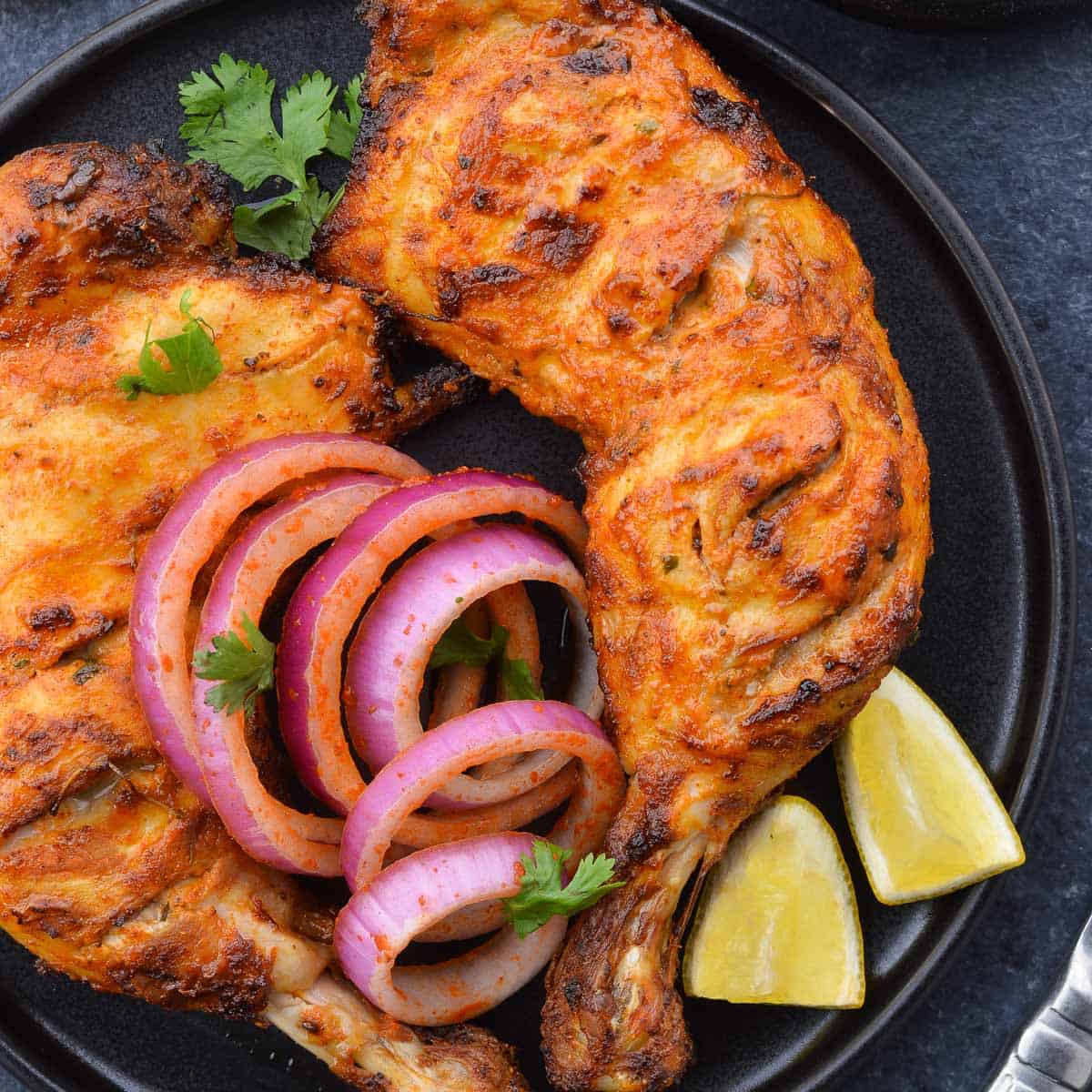
Zarda: Zarda is a sweet rice dish made with boiled rice, sugar, ghee, nuts, and food coloring, giving it a vibrant yellow or orange hue. It’s flavored with cardamom and garnished with almonds, pistachios, and raisins, offering a delightful sweet treat.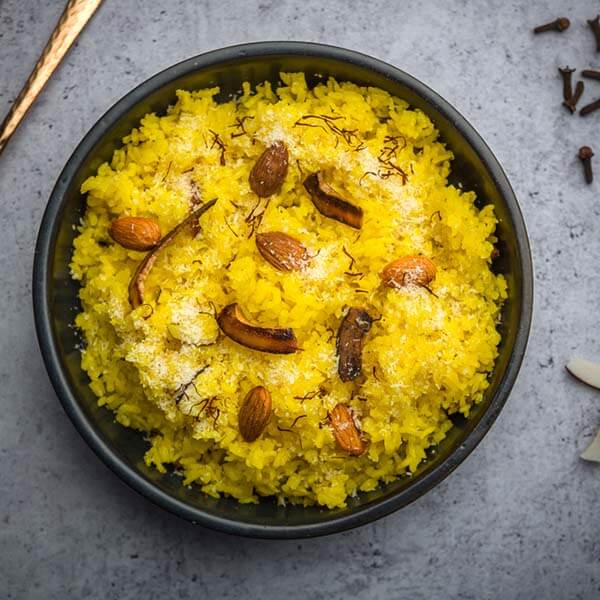
Kheer: Kheer is a creamy rice pudding made by simmering rice in milk until it thickens. It’s sweetened with sugar and flavored with cardamom, saffron, and nuts like almonds and pistachios, creating a rich and comforting dessert.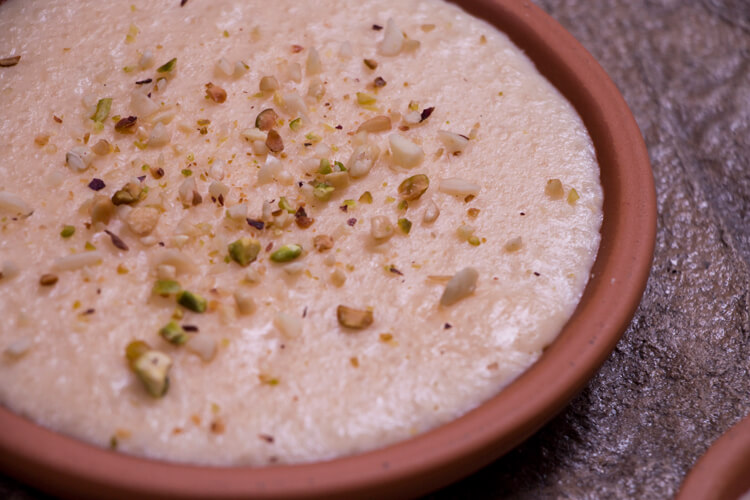
Jalebi: Jalebi is a popular sweet made by deep-frying a batter of flour, yogurt, and gram flour into intricate swirls or pretzel shapes. Once fried, these golden swirls are soaked in sugar syrup, resulting in a crispy, sweet treat often enjoyed warm.
Chana Chaat: Chana Chaat is a tangy and spicy dish made with boiled chickpeas mixed with chopped onions, tomatoes, green chilies, and various spices like chaat masala, cumin, and tamarind chutney. It’s a popular street food known for its burst of flavors and textures.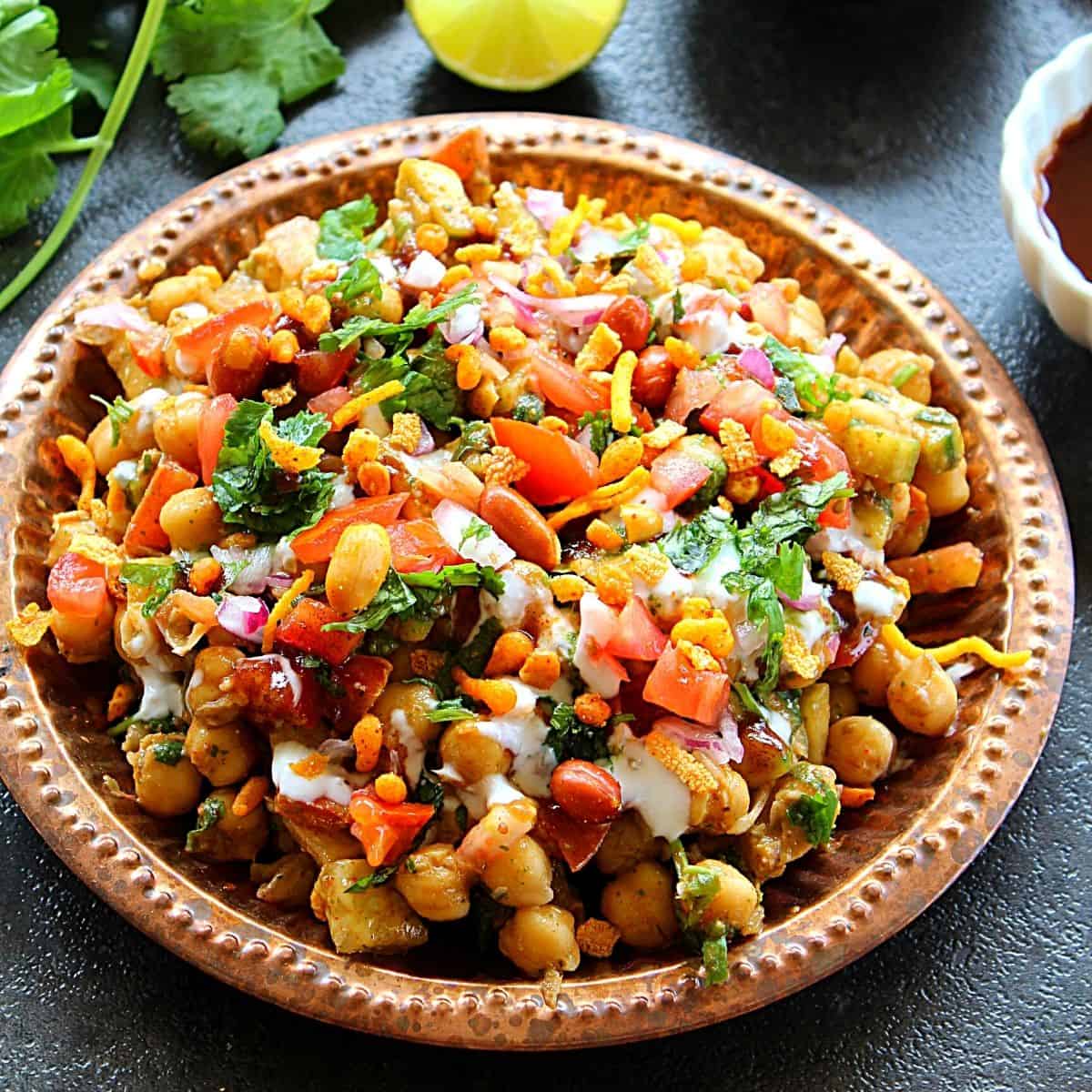
Fruit Chaat: Fruit Chaat is a refreshing mix of seasonal fruits like apples, bananas, oranges, and pomegranates tossed with chaat masala, lemon juice, and sometimes a hint of black salt. It’s a flavorful and healthy snack commonly enjoyed during the warmer months.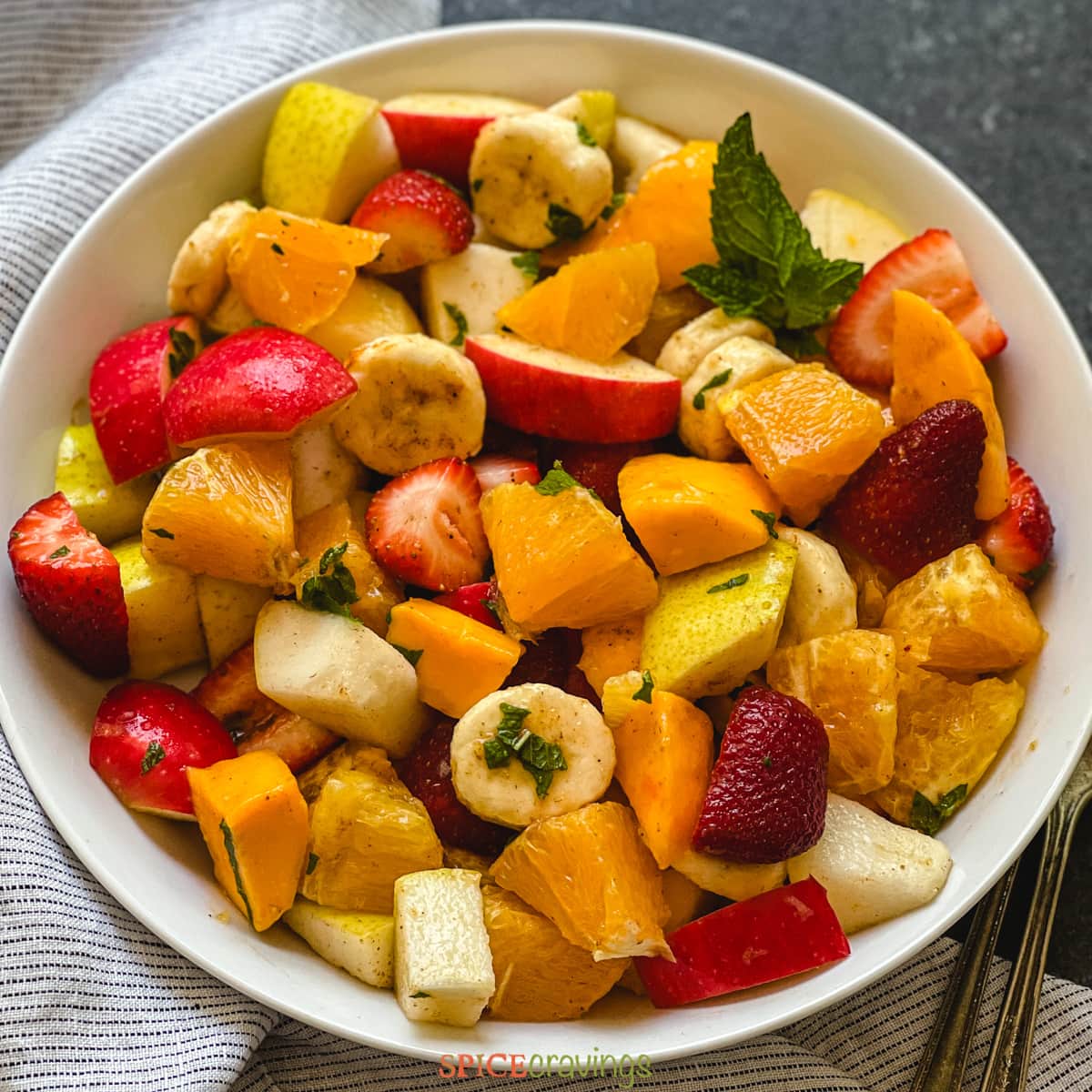
Aloo Chaat: Aloo Chaat features crispy fried potato cubes tossed in a blend of spices like chaat masala, cumin, and chili powder. It’s often garnished with chopped onions, tomatoes, and cilantro, and drizzled with tamarind chutney and yogurt, creating a savory and tangy street snack.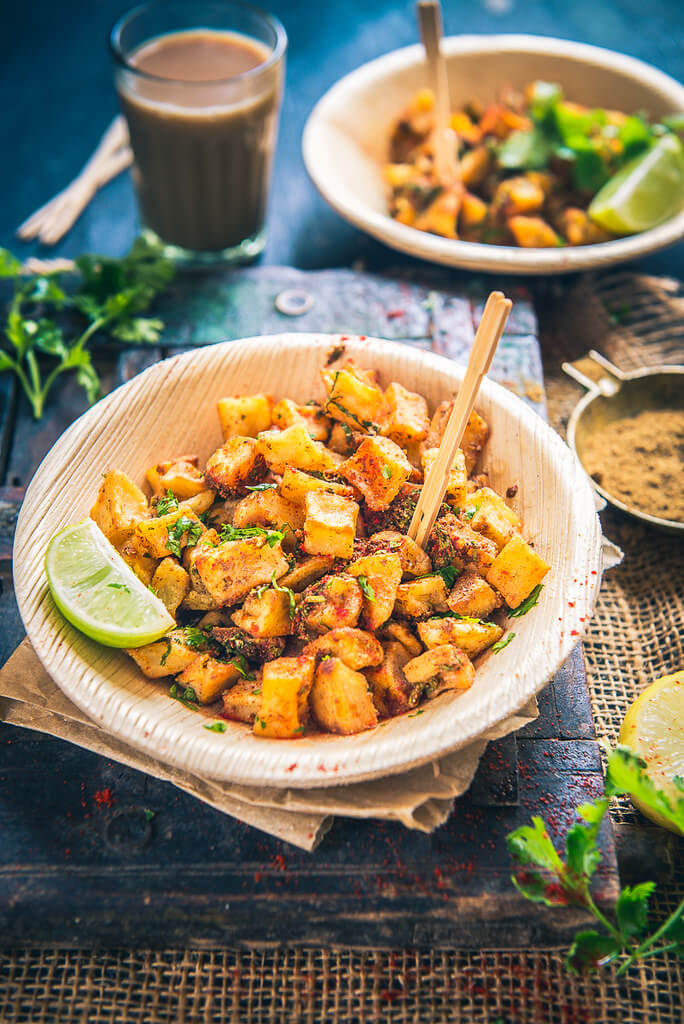
Chicken Roll: A Chicken Roll consists of thinly sliced or shredded chicken, marinated with spices like ginger, garlic, and cumin, cooked and rolled into a flatbread or paratha along with sliced onions, lettuce, and a drizzle of sauce or chutney, creating a flavorsome handheld snack.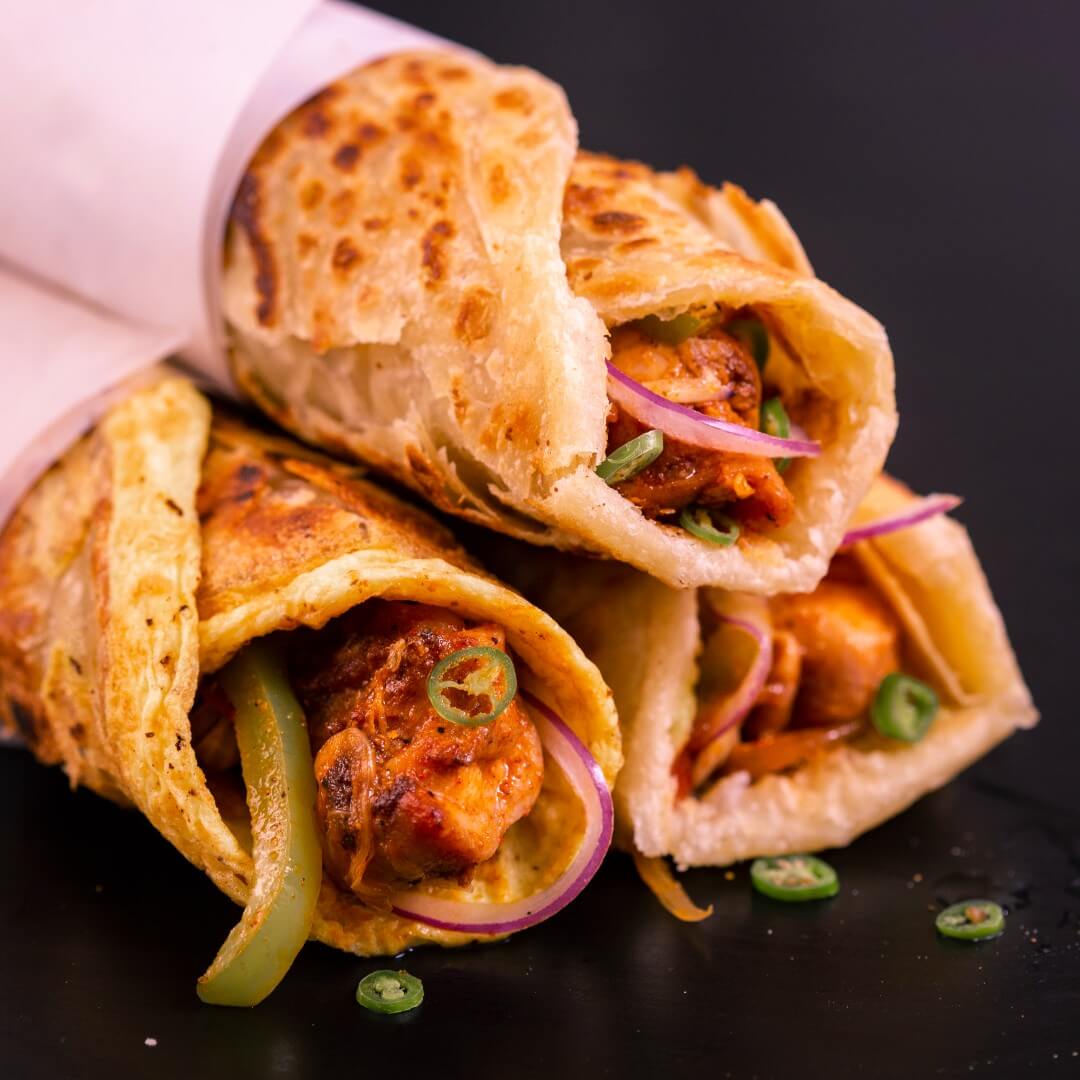
Reshmi Kebab: Reshmi Kebabs are smooth and silky kebabs made with finely ground meat (usually chicken) mixed with yogurt, cream, and spices like coriander, cumin, and garam masala. They’re often skewered and grilled, resulting in tender and flavorful kebabs.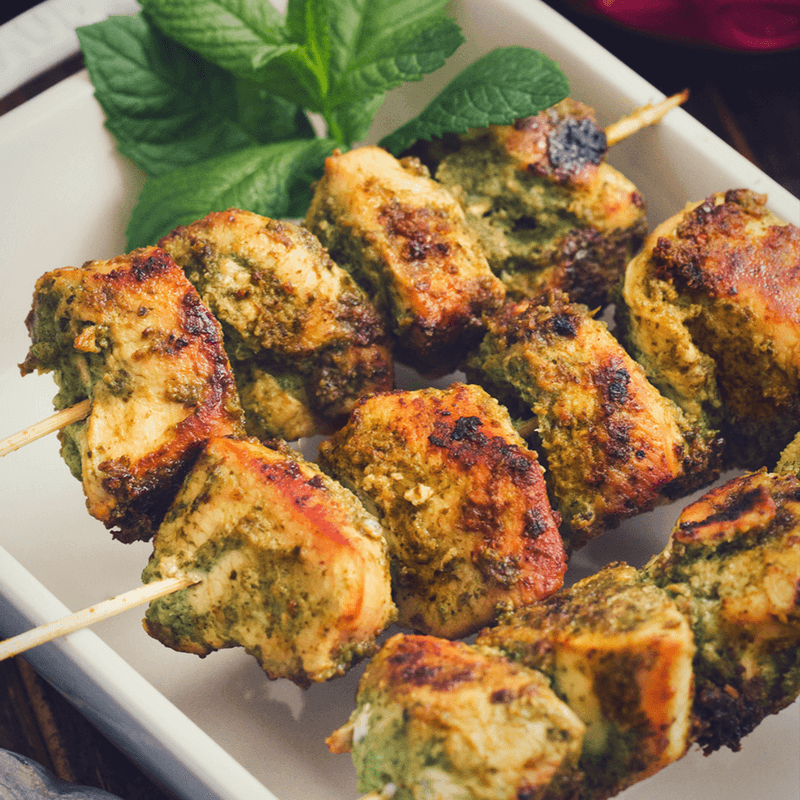
Anda Shami Burger: Anda Shami Burger is a fusion dish featuring a flavorful Shami Kebab (made from minced meat and lentils) topped with a fried egg, lettuce, onions, and sauces, all sandwiched between a soft burger bun, offering a satisfying blend of textures and tastes.
Chicken Handi: Chicken Handi is a creamy and aromatic dish where chicken is cooked in a handi (a traditional cooking pot) with tomatoes, green chilies, ginger, garlic, and spices like turmeric, coriander, and garam masala. It’s simmered until the chicken is tender and served garnished with fresh cilantro.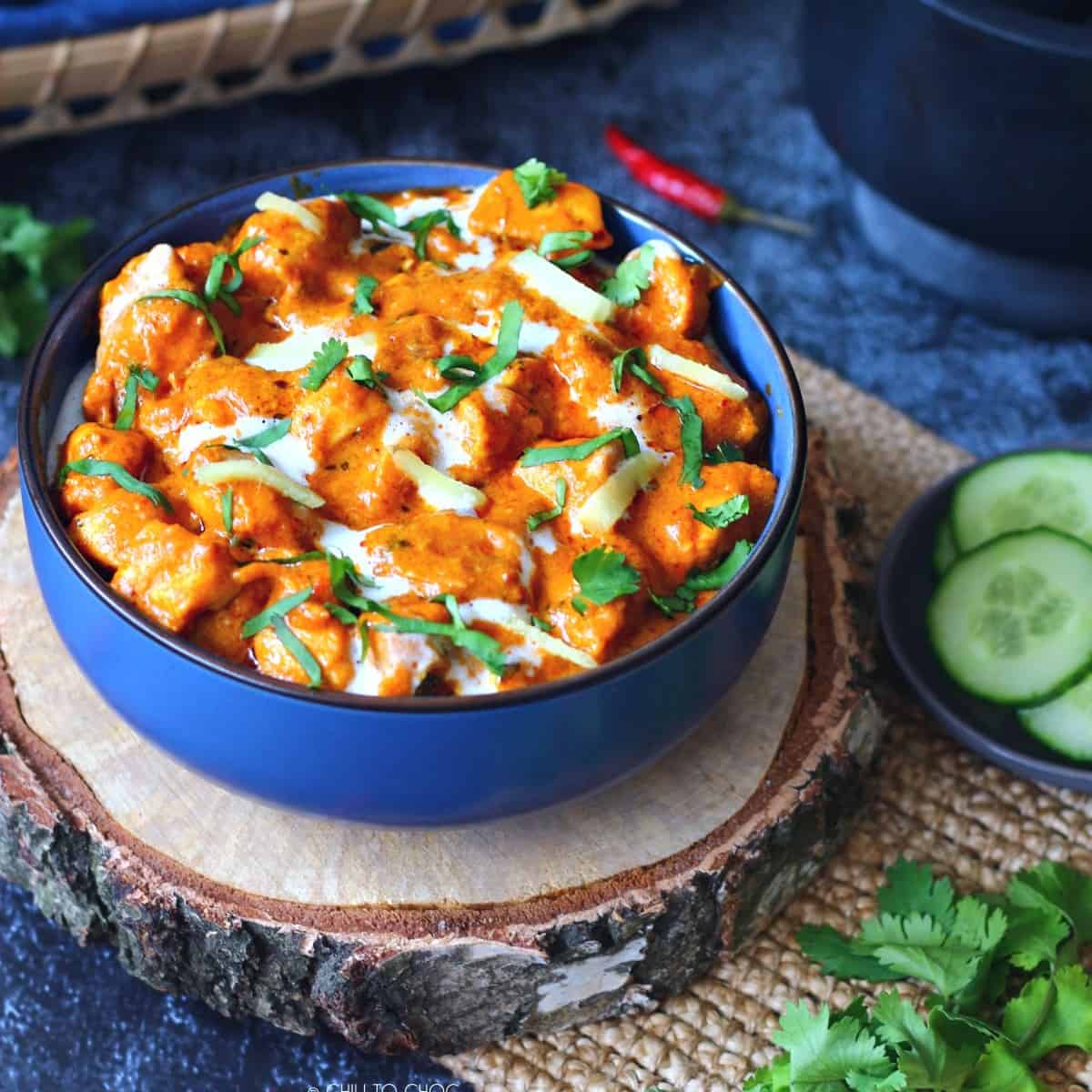
Naan: Naan is a leavened flatbread made from refined flour, yeast, yogurt, and sometimes milk. It’s traditionally baked in a tandoor (clay oven), resulting in a soft and slightly chewy bread that pairs perfectly with various curries and kebabs.
Shahi Tukray: Shahi Tukray is a rich and indulgent dessert made with fried bread slices soaked in sweetened, thickened milk flavored with cardamom and saffron. It’s garnished with nuts like almonds and pistachios, offering a delightful sweet treat.
Rabri: Rabri is a sweet, condensed milk-based dessert made by simmering milk until it reduces to a thick, creamy consistency. It’s sweetened with sugar, flavored with cardamom, and saffron, and garnished with nuts, offering a rich and decadent dessert.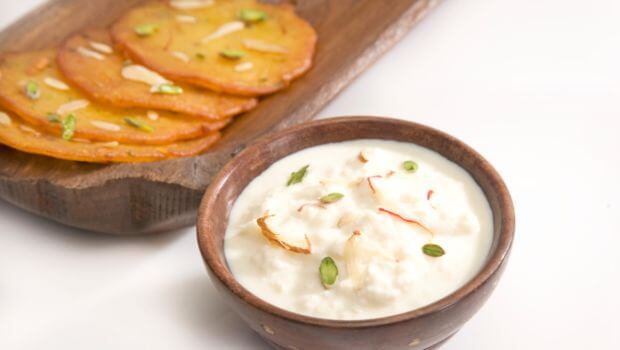
Fish Fry: Fish Fry involves marinating fish (often pomfret or trout) with spices like red chili powder, turmeric, and cumin, then coating it in a seasoned gram flour (besan) batter before deep-frying until crispy and golden brown.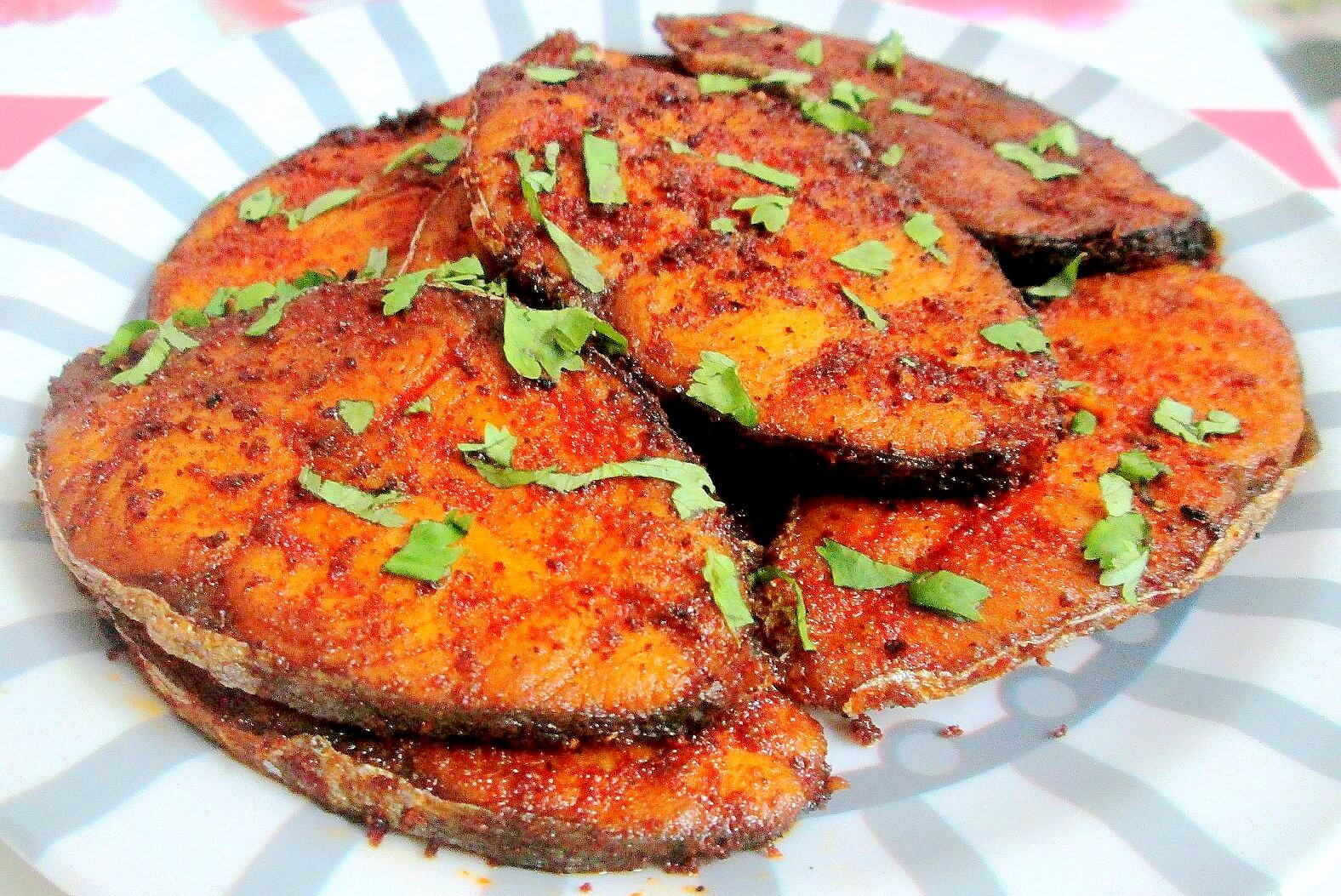
Chicken Pulao: Chicken Pulao is a fragrant rice dish cooked with chicken, basmati rice, and aromatic spices like cinnamon, cardamom, and cloves. It’s cooked in a broth until the flavors meld together, resulting in a flavorful one-pot meal.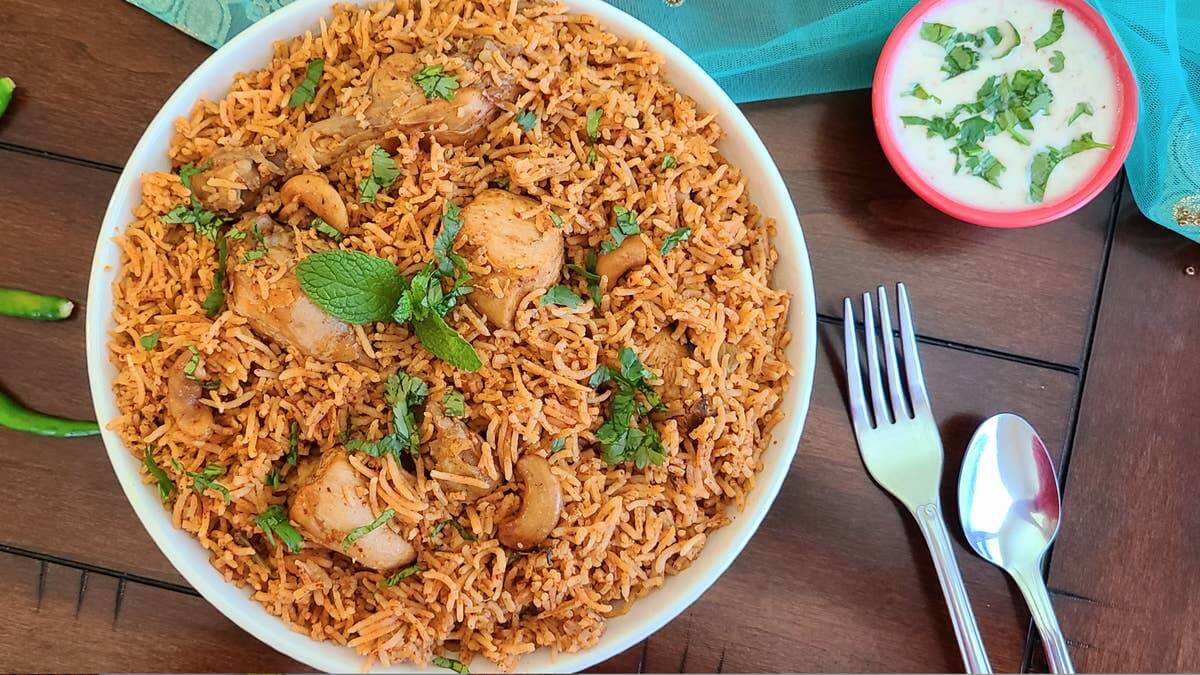
Saag: Saag is a Punjabi dish made from leafy greens like mustard greens, spinach, or fenugreek leaves cooked with spices like ginger, garlic, and garam masala. It’s often combined with either paneer (Indian cheese) or meat, creating a nutritious and flavorful dish.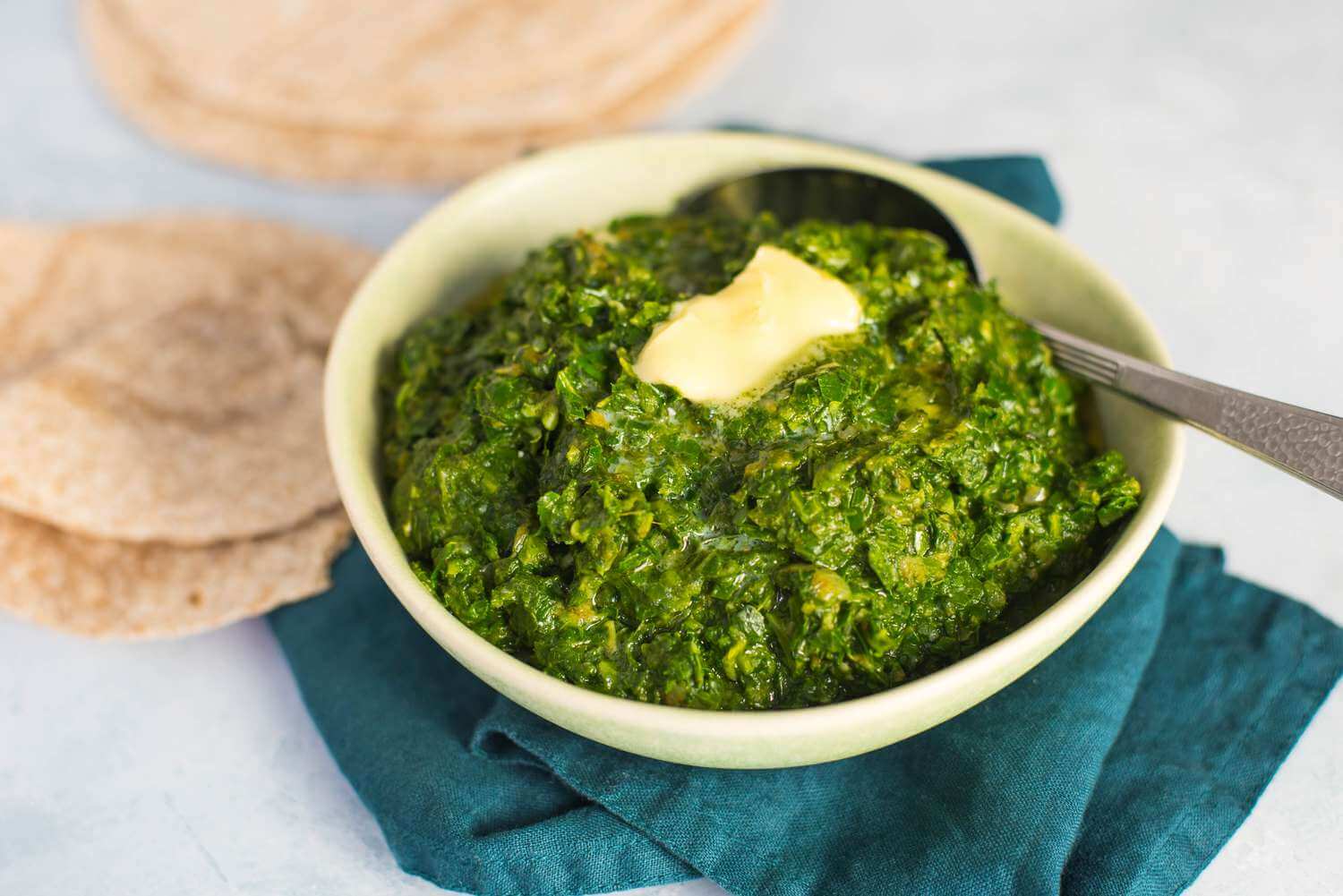
Butter Chicken: Butter Chicken, also known as Murgh Makhani, is a creamy and mildly spiced chicken dish marinated in a mixture of yogurt and spices, then cooked in a rich tomato-based sauce enriched with butter and cream, resulting in a flavorful and velvety dish.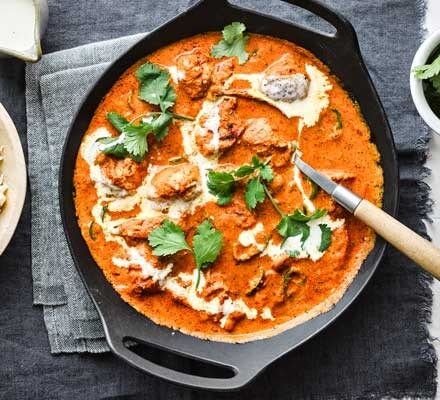
History and Culture
Culinary History
Rawalpindi’s food history unveils a tapestry woven with diverse cultural threads, shaping its unique culinary identity within Pakistan. The evolution of food in Rawalpindi is a testament to centuries of influences that have left indelible marks on its gastronomy.
Roots and Evolution Tracing back centuries, Rawalpindi’s culinary roots lie in the fusion of Mughlai, Afghan, Punjabi, and Kashmiri influences, each contributing distinct flavors and cooking styles to the local cuisine. This amalgamation birthed iconic dishes that showcase the diversity and richness of flavors found in the region’s food.
Significance of Key Dishes Signature dishes like Nihari, Haleem, and Chapli Kebab have a historical significance that mirrors Rawalpindi’s past. These dishes, rooted in tradition and local lore, have transcended time, symbolizing the cultural heritage and culinary legacy of the region.
Culinary Traditions
Rawalpindi’s culinary traditions are steeped in time-honored practices, reflecting a deep-rooted connection to its heritage and culture.
Unique Cooking Methods The city’s culinary heritage thrives on traditional cooking methods passed down through generations. Tandoori cooking, slow-cooking, and handi-based preparations are integral techniques that impart distinct flavors to dishes like Tandoori Chicken and Chicken Handi.
Utensils and Techniques Exploring Rawalpindi’s culinary landscape reveals a treasure trove of unique utensils and techniques. From the use of brass utensils in traditional kitchens to the artistry behind skewering seekh kebabs, these methods add authenticity and depth to the food in Rawalpindi.
Food-Centric Festivals Festivals and events like Eid-ul-Fitr and Basant showcase Rawalpindi’s food-centric culture. These celebrations bring communities together, highlighting the significance of culinary delights in fostering social connections and sharing traditions.
Cultural Importance The prominence of food in Rawalpindi extends beyond mere sustenance; it’s intertwined with cultural practices, symbolizing hospitality, celebration, and unity. The culinary traditions in Rawalpindi are not just about flavors but a narrative of cultural richness and heritage that continues to flourish through generations.
Tips and Tricks
When delving into the culinary delights of Rawalpindi, understanding a few tips and tricks can enhance the overall experience, ensuring an authentic and enjoyable exploration of the food scene.
Dining Etiquette
Partaking in the food in Rawalpindi comes with an opportunity to embrace local dining customs and etiquette.
Cultural Dining Norms Embrace the local customs by being open to eating with hands, which is a common practice in many local eateries. Remember to use your right hand for eating as the left hand is considered impolite.
Respect for Traditions Shows respect for the culinary traditions by adopting proper table manners and demonstrating appreciation for the dishes served. Engaging with locals and sharing stories over a meal often leads to memorable experiences.
Best Time to Visit
Timing your visit to Rawalpindi’s eateries, markets, and festivals can significantly influence the authenticity of your culinary journey.
Market Visits Morning visits to local markets like Raja Bazaar or Saddar Market offer the freshest produce and a glimpse into the bustling trade, providing a genuine taste of the local food culture.
Festival Seasons During festive seasons like Eid-ul-Fitr or Basant, Rawalpindi’s food scene comes alive with vibrant street food stalls and traditional delicacies. These times present ideal opportunities to immerse yourself in the rich culinary heritage.
Cooking at Home
Bringing the flavors of Rawalpindi to your own kitchen can be a rewarding experience, allowing you to recreate traditional dishes.
Traditional Recipes Experimenting with traditional recipes such as Chicken Karahi or Aloo Tikki can be a delightful culinary adventure. Seek authentic recipes from trusted sources and explore local spice markets to procure genuine ingredients.
Ingredient Substitutes For those seeking to cook Rawalpindi dishes outside the region, understanding suitable ingredient substitutes can make the cooking process more accessible. For instance, using smoked paprika as an alternative to the unique smoky flavor imparted by a tandoor.
Ingredients
Exploring the key ingredients that form the foundation of Rawalpindi’s cuisine reveals a rich tapestry of flavors and cultural significance deeply embedded in the local gastronomy.
Core Ingredients
The essence of food in Rawalpindi is intricately woven with a handful of essential ingredients that define its culinary identity.
Spices and Aromatics Coriander and Cumin: These aromatic spices hold a prominent place in Rawalpindi’s cuisine, imparting earthy and citrusy flavors to dishes like Chicken Karahi and Biryani. They are the backbone of numerous savory delicacies, elevating the taste profile.
Meats Beef, Chicken, and Mutton: Meats play a pivotal role in the city’s culinary landscape. Beef is often featured in hearty stews like Nihari, while succulent chicken or tender mutton takes center stage in dishes like Tandoori Chicken and Haleem, offering diverse textures and flavors.
Cultural Significance
These core ingredients carry profound cultural significance, reflecting centuries-old culinary traditions passed down through generations. They not only add depth to the flavors but also symbolize the heritage and shared culinary experiences of Rawalpindi’s inhabitants.
Local Produce
Rawalpindi’s reliance on locally sourced produce contributes to the authenticity and freshness of its cuisine, celebrating the flavors of the region’s fertile lands.
Fresh Produce Diversity Vegetables and Herbs: Locally grown vegetables like tomatoes, onions, and green chilies, alongside aromatic herbs such as mint and cilantro, infuse vibrancy and freshness into dishes like Chana Chaat and Aloo Tikki. The distinct taste of these locally sourced ingredients defines the authentic flavors of Rawalpindi’s cuisine.
Fruits and Grains Pomegranates and Basmati Rice: Pomegranates, often used in raitas or as garnishes, add a burst of sweet-tartness to various dishes. Meanwhile, the fragrant Basmati rice, a staple in Biryani and Pulao, exemplifies the significance of locally grown grains.
Sustainability and Local Sourcing
The food in Rawalpindi not only tantalizes taste buds but also embraces sustainable practices that prioritize the environment, local communities, and ethical food production.
Sustainable Practices
Preserving Rawalpindi’s culinary heritage goes hand in hand with adopting sustainable food practices.
Importance of Sustainability Rawalpindi’s culinary landscape acknowledges the importance of sustainable practices to safeguard natural resources and promote eco-friendly food production methods. Emphasizing sustainability ensures the preservation of the region’s biodiversity and cultural heritage.
Restaurants and Markets Several restaurants and markets in Rawalpindi champion sustainability by sourcing ingredients from local farmers, reducing food waste, and implementing eco-friendly packaging. These establishments prioritize freshness and quality while minimizing their ecological footprint.
Community Initiatives
Community-driven efforts play a pivotal role in fostering sustainable food practices and supporting local producers.
Support for Local Farmers Initiatives aimed at supporting local farmers, such as farmers’ markets or cooperatives, provide a platform for farmers to directly sell their produce to consumers. These endeavors strengthen the local economy while ensuring fair prices for farmers.
Sustainable Food Production Efforts promoting sustainable food production, including organic farming practices and responsible use of natural resources, contribute to the resilience of Rawalpindi’s food system. These initiatives encourage healthier ecosystems and minimize the environmental impact of food production.
Ethical Eating Practices Community initiatives also focus on educating consumers about ethical eating practices, encouraging conscious consumption, reducing food waste, and supporting fair trade principles. These endeavors foster a sense of responsibility and mindfulness among consumers toward the food they consume.
Promoting a Sustainable Food Culture The food in Rawalpindi isn’t just about flavors; it’s about cultivating a sustainable food culture that respects the environment, supports local communities, and ensures a legacy of gastronomic traditions for future generations. These initiatives demonstrate a collective commitment to preserving the authenticity and sustainability of Rawalpindi’s food heritage.
Pairings and Recommendations
Enhancing the experience of indulging in the diverse flavors of Rawalpindi’s cuisine involves exploring complementary beverages and expanding the gastronomic journey with additional dishes.
Beverage Pairings
Rawalpindi’s culinary delights are perfectly complemented by a range of traditional and refreshing beverages.
Lassi Refreshing Yogurt Drink: Lassi, a yogurt-based drink available in sweet or savory variations, provides a cooling contrast to the bold flavors of Rawalpindi’s cuisine. The sweet lassi, infused with flavors like mango or rosewater, balances the spiciness, while the savory lassi acts as a refreshing palate cleanser.
Chai Local Tea Blend: Chai, an integral part of Pakistani culture, offers a comforting and aromatic pairing with the rich and flavorful dishes of Rawalpindi. Sip on a steaming cup of chai, brewed with aromatic spices like cardamom and cloves, to complement the hearty flavors of the cuisine.
Local Non-Alcoholic Beverages Regional Specialties: Exploring local non-alcoholic beverages such as sugarcane juice or Sattu, a nutritious drink made from roasted gram flour, provides a unique taste of Rawalpindi’s beverage culture. These beverages offer a delightful contrast and refreshment while savoring the local food.
Other Dishes to Try
While exploring the food in Rawalpindi, venturing into additional dishes broadens the culinary experience, offering diverse flavors and textures.
Pindi Chole Spiced Chickpea Curry: Pindi Chole, a flavorful chickpea curry simmered in aromatic spices like ginger, garlic, and pomegranate seeds, showcases the richness and depth of Rawalpindi’s vegetarian offerings.
Peshawari Ice Cream Unique Dessert: Indulge in the rich and creamy Peshawari ice cream, often flavored with saffron, pistachios, and cardamom, offering a sweet conclusion to a delightful culinary journey in Rawalpindi.
Street-Side Delights Exploration of Local Street Food: Delve into the array of street-side delights such as Bun Kebabs, Kathi Rolls, or Chana Samosas, offering a glimpse into the vibrant street food culture and adding a variety of flavors to the culinary expedition.
Culinary Diversity Exploring additional dishes beyond the quintessential ones allows for a broader understanding and appreciation of Rawalpindi’s diverse culinary landscape. These dishes complement the local food scene, adding depth and diversity to the gastronomic journey.
Cultural Significance
The food in Rawalpindi transcends mere sustenance; it embodies a profound cultural significance that intertwines with societal norms, traditions, and daily life, reflecting the city’s rich heritage and values.
Food and Culture
The culinary landscape of Rawalpindi serves as a mirror to the region’s cultural tapestry, encapsulating values, traditions, and local identity.
Reflection of Values Food in Rawalpindi embodies the values of hospitality, generosity, and unity deeply rooted in the local culture. Sharing meals symbolizes warmth and welcome, reinforcing bonds within families and communities.
Preservation of Traditions Traditional cooking methods passed down through generations, showcase a commitment to preserving cultural heritage. These methods, combined with the use of time-honored ingredients, underscore the city’s cultural pride.
Role in Celebrations and Daily Life
Food in Rawalpindi occupies a central place in various celebrations, social gatherings, and daily routines, shaping communal experiences and fostering connections.
Celebratory Feasts During festivals like Eid-ul-Fitr or weddings, elaborate feasts featuring an array of traditional dishes highlight the significance of food as an integral part of celebrations. These feasts signify unity, abundance, and joyous occasions.
Social Gatherings From tea gatherings to elaborate family meals, food forms the centerpiece of social interactions. It serves as a catalyst for conversations, storytelling, and the sharing of cultural anecdotes, strengthening social ties.
Daily Rituals In daily life, meals bring families together, offering moments of togetherness and bonding. The preparation and sharing of food in Rawalpindi create opportunities for familial connections and serve as a means of passing down culinary traditions to future generations.
Conclusion
As we conclude our exploration of the food in Rawalpindi, it’s evident that the city’s culinary landscape is not merely a blend of flavors but a vibrant tapestry reflecting its rich heritage and cultural values.
The diverse and multifaceted nature of food in Rawalpindi offers a captivating journey through time-honored traditions, regional specialties, and an array of distinctive flavors. It’s a testament to the fusion of influences that have shaped Pakistani cuisine, resulting in a unique and enticing gastronomic experience.
Exploring Rawalpindi’s food scene unveils more than just delectable dishes; it unveils a narrative deeply intertwined with cultural significance and community connections. Each dish encapsulates stories, values, and traditions passed down through generations, fostering a sense of unity and kinship among its people.
Moreover, the significance of food in Rawalpindi extends beyond the dining table. It serves as a bridge, connecting individuals from diverse backgrounds, fostering bonds, and celebrating the city’s cultural mosaic.
As we encourage readers to delve into Rawalpindi’s culinary delights, we invite them to immerse themselves in the authenticity and diversity of flavors. From savoring aromatic biryanis to relishing street-side delicacies, the food in Rawalpindi encapsulates a cultural journey worth experiencing.
Let us embrace the legacy of Rawalpindi’s food culture, appreciating not only the flavors but also the stories, traditions, and values that make each dish a cherished part of the city’s identity. Embrace the richness, diversity, and warmth that the food in Rawalpindi brings forth, inviting all to partake in this culinary adventure and celebrate the city’s gastronomic heritage.

